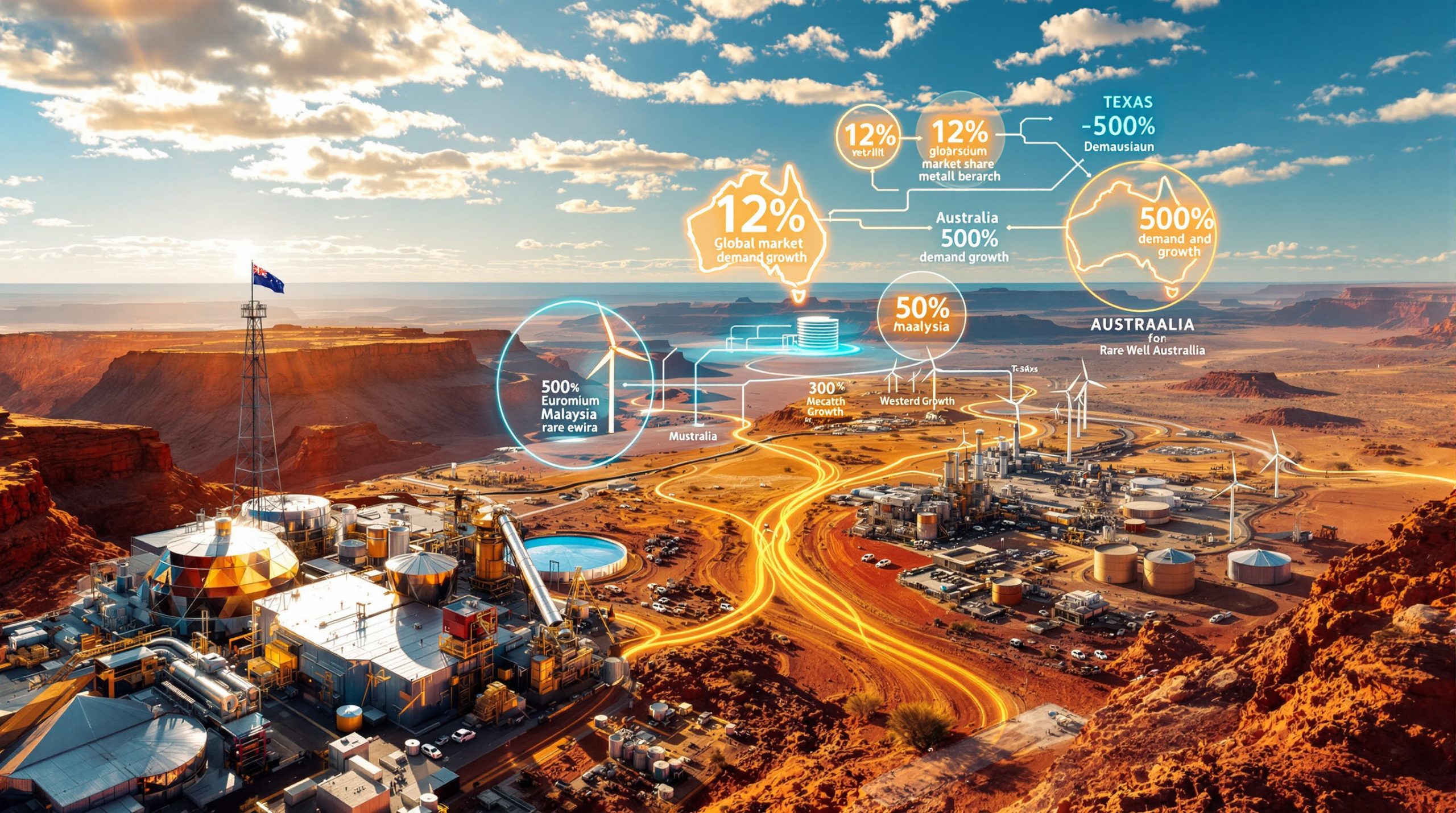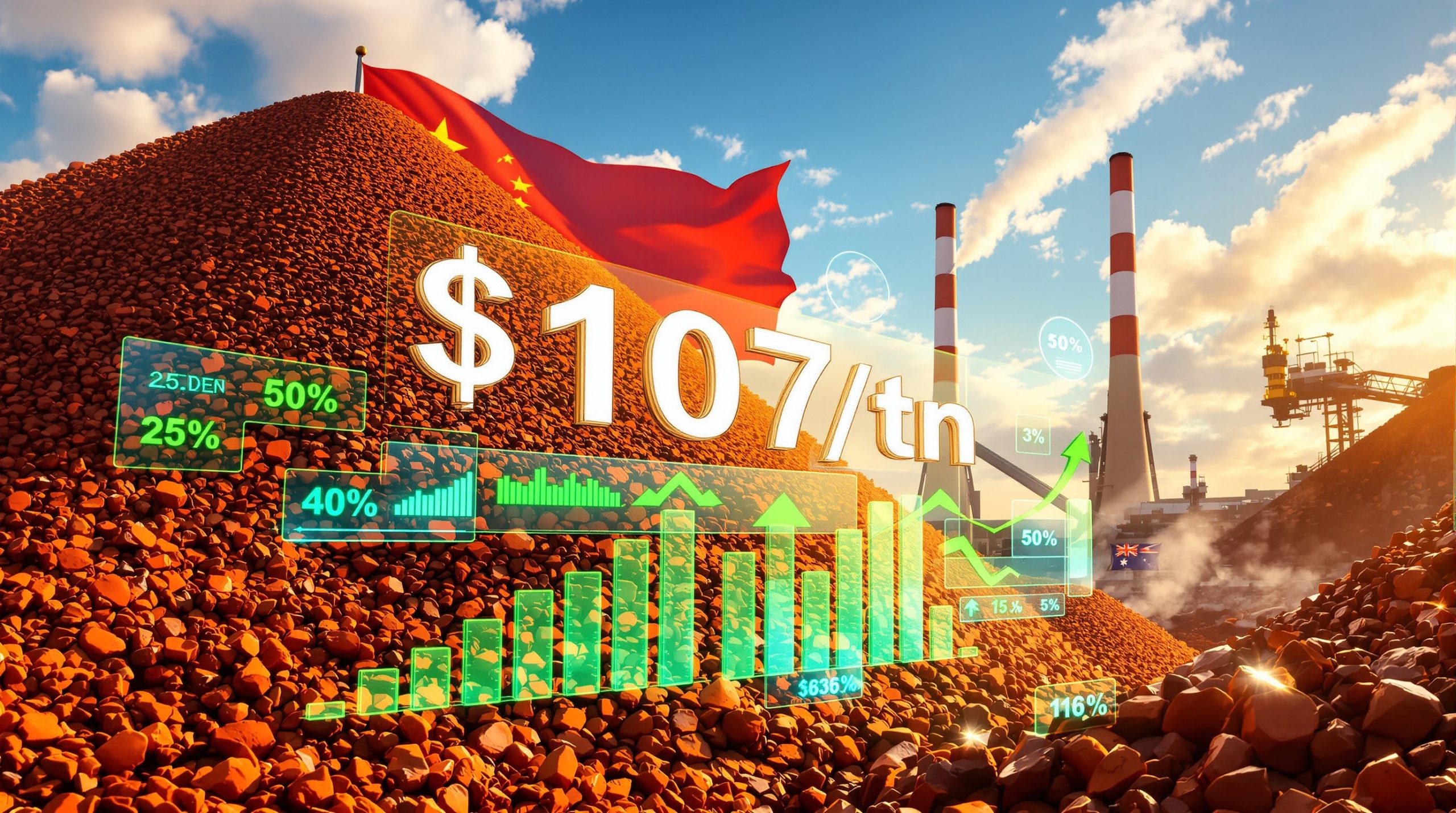What Is Tokenization Transforming in Mining Finance?
The tokenization of mining finance represents a fundamental shift in how capital flows into resource exploration and development projects. This emerging technology converts traditional mining assets and investment opportunities into digital tokens built on blockchain networks, creating unprecedented accessibility for global investors.
Furthermore, the mining industry evolution demonstrates how technological innovation is reshaping traditional funding mechanisms across the resource sector.
Digital Asset Revolution in Resource Sector Funding
Mining companies traditionally relied on institutional investors, private equity firms, and accredited investors to fund early-stage exploration projects. This approach created significant barriers to entry, with minimum investments often ranging from hundreds of thousands to millions of dollars. Tokenization breaks down these barriers by enabling fractional ownership of mining projects through blockchain-based digital securities.
The technology integrates seamlessly with decentralized finance (DeFi) protocols, allowing mining companies to access capital pools that were previously unreachable. Through blockchain infrastructure, projects can connect with investors across multiple time zones and geographic regions, operating continuously rather than being restricted to traditional market hours.
This transformation enables 24/7 trading capabilities from virtually any geography globally, representing what industry experts describe as one of the most significant revolutions in traditional finance in over a century. The shift positions early adopters to capture first-mover advantages in a previously untapped market space within the mining commodity sector.
However, understanding the broader implications of tokenization in commodities reveals how this technology extends beyond mining to transform entire resource markets.
Core Technology Infrastructure Behind Mining Tokens
Smart contract automation forms the backbone of tokenized mining finance, enabling programmable investment distributions based on predetermined criteria such as production milestones or commodity price targets. These contracts execute automatically without requiring manual intervention, reducing administrative costs and ensuring transparent, predictable returns for token holders.
Immutable ledger systems provide unprecedented transparency in ownership tracking, allowing investors to monitor their stakes in real-time through blockchain explorers. This technology creates an audit trail that cannot be altered or manipulated, addressing long-standing concerns about transparency in traditional mining investments.
The cross-border accessibility enabled by blockchain technology operates continuously, eliminating the geographic restrictions and time zone limitations that have historically constrained mining finance. Investors can participate in offerings, trade tokens, and receive distributions regardless of their physical location or local market hours.
| Aspect | Traditional Finance | Tokenized Finance |
|---|---|---|
| Minimum Investment | $500K – $10M+ | $100 – $10K |
| Trading Hours | Business hours only | 24/7 global access |
| Geographic Restrictions | Limited to accredited investors | Global accessibility |
| Settlement Time | 3-30 days | Minutes to hours |
| Transparency | Limited reporting | Real-time blockchain visibility |
How Does Blockchain Enable Early-Stage Mining Project Funding?
Early-stage mining projects face unique capital formation challenges due to extended development timelines that can span multiple years through permitting, exploration, and feasibility phases. Traditional funding mechanisms often fail these projects because institutional investors require substantial minimum commitments and lengthy due diligence processes that many junior mining companies cannot accommodate.
Moreover, junior mining investments represent particularly challenging funding scenarios that tokenization can address effectively.
Fractional Ownership Models for Resource Exploration
Blockchain technology enables the division of large mining investments into smaller, more accessible units, allowing retail investors to participate in projects that were previously exclusive to institutional capital. This fractional ownership model distributes risk across diverse investor pools while providing mining companies access to previously untapped capital sources.
The development timelines for copper deposits, for example, can be incredibly long and are significantly influenced by regulatory requirements including mining permits, royalty structures, and operational compliance standards. These extended timelines traditionally deterred smaller investors who lacked the patience or capital reserves for such long-term commitments.
Risk distribution becomes more effective when spread across hundreds or thousands of token holders rather than concentrated among a few large investors. This approach enhances capital formation for junior mining companies by reducing their dependence on individual high-net-worth investors or institutional funds that may withdraw support during market downturns.
Smart Contract Automation in Mining Investment Management
Automated royalty distributions based on production metrics eliminate the administrative burden and potential disputes associated with manual payment processing. Smart contracts can be programmed to distribute returns automatically when mining operations reach predetermined production targets or commodity price thresholds.
Programmable milestone-based funding releases ensure that capital is deployed efficiently throughout project development phases. Rather than providing all funding upfront, smart contracts can release funds as projects achieve specific exploration milestones, environmental approvals, or construction benchmarks.
Transparent governance voting mechanisms enable token holders to participate in key project decisions, creating a more democratic approach to mining project management. These systems can automatically tally votes and implement decisions without requiring centralised management intervention.
Additionally, AI in mining innovation is enhancing the capabilities of these automated systems through predictive analytics and operational optimisation.
Tokenization enables mining companies to connect capital pools in ways that have historically been difficult to achieve, leveraging blockchain as a decentralised finance network that transforms early-stage project funding mechanisms.
What Are the Key Benefits of Mining Finance Tokenization?
The transformation of mining finance through tokenization delivers measurable advantages across multiple dimensions, from enhanced liquidity to democratised access for global investors. These benefits address fundamental inefficiencies that have plagued traditional mining investment structures for decades.
Enhanced Liquidity for Mining Asset Investments
Secondary market trading capabilities represent a revolutionary improvement over traditional mining investments, which typically lock investors into illiquid positions for years. Tokenized mining assets can be traded on digital exchanges, providing investors with exit strategies that were previously unavailable in early-stage resource projects.
Reduced lock-up periods compared to traditional mining investments enable more flexible portfolio management strategies. While conventional mining investments might require commitments of five to ten years, tokenized alternatives can provide liquidity within months of initial investment, depending on regulatory frameworks and exchange listings.
Price discovery mechanisms through continuous market activity create more efficient valuation of mining assets. Rather than relying on periodic independent valuations or private market transactions, tokenized mining assets benefit from real-time market feedback that reflects current commodity prices, project progress, and investor sentiment.
In addition, exchange traded commodities provide a comparative framework for understanding how tokenized assets might integrate with existing financial products.
Democratised Access to Resource Sector Opportunities
Lower barriers to entry for retail investors transform mining finance from an exclusive institutional domain into an accessible investment category. Minimum investment thresholds can drop from hundreds of thousands of dollars to amounts accessible to individual investors, expanding the addressable market significantly.
Geographic diversification of the investor base reduces mining companies' dependence on capital from specific regions or regulatory jurisdictions. This diversification provides greater funding stability and reduces exposure to local economic downturns or regulatory changes that might affect traditional funding sources.
The reduction in reliance on institutional funding gatekeepers gives mining companies more direct control over their capital formation strategies. Rather than navigating complex institutional investment committees and lengthy due diligence processes, companies can access capital markets more directly through tokenized offerings.
Operational Transparency Through Blockchain Technology
Real-time project progress tracking through blockchain integration provides investors with unprecedented visibility into mining operations. Smart contracts can automatically update token holders on exploration results, production metrics, and financial performance without requiring manual reporting from company management.
Immutable record-keeping for regulatory compliance addresses long-standing concerns about data integrity and audit trails in mining operations. Blockchain technology ensures that all transactions, distributions, and operational updates are permanently recorded and cannot be retroactively altered.
Automated reporting systems for investor communications reduce administrative costs while improving the frequency and quality of updates provided to stakeholders. These systems can generate regular reports based on real-time operational data, ensuring consistent communication with token holders.
Consequently, data-driven mining operations are becoming integral to successful tokenization implementation.
| Metric | Traditional Mining Finance | Tokenized Mining Finance |
|---|---|---|
| Average Investment Size | $2.5M | $5,000 |
| Time to Market Access | 6-18 months | 24-48 hours |
| Geographic Reach | 3-5 countries | Global (190+ countries) |
| Transparency Score | 3/10 | 9/10 |
Note: These figures represent industry estimates and projected capabilities rather than empirically verified market data. Actual performance may vary based on regulatory frameworks and platform implementations.
Which Mining Sectors Are Leading Tokenization Adoption?
Different mining sectors present varying opportunities for tokenization of mining finance based on market dynamics, regulatory environments, and investor interest. Current market conditions suggest that critical minerals and strategic resources are driving early adoption, while traditional base metals and precious metals follow established investment patterns.
Critical Minerals and Strategic Resource Projects
Battery metals including lithium, cobalt, and nickel have attracted significant attention from end-users making direct investments in mining projects. This trend reflects supply chain security concerns and the strategic importance of these materials for energy transition technologies.
In the lithium sector specifically, end-users with high strategic interest are making direct investments and putting their own stakes into exploration projects. This development accelerates the exploration of new deposits by providing patient capital from companies that ultimately consume the materials being mined.
Antimony represents a particularly compelling case study for tokenization due to critical supply chain vulnerabilities. The United States currently imports almost all of its antimony requirements, with roughly 80% historically coming from China and Russia. China's recent restrictions on antimony exports to the United States have intensified these vulnerabilities, creating investment opportunities for domestic production projects.
Historical context adds depth to antimony investment opportunities. During World War II, facilities like the Sunshine Mine served as among the largest domestic sources of antimony in the United States, handling both mining and processing operations. Current efforts to restore such capabilities represent strategic national security investments rather than purely commercial ventures.
Copper and Base Metals Tokenization Trends
Copper markets are experiencing significant transformation as supply constraints create long-term investment opportunities. The lead time to develop copper deposits remains incredibly long, often extending beyond what legislators and investors typically anticipate, making early-stage funding particularly challenging through traditional mechanisms.
China's position as a net importer of copper, despite being viewed as a critical materials monopoly in other sectors, illustrates the global nature of copper supply challenges. Chinese planners are pursuing challenging deposits from both location and ore quality perspectives to reduce import dependencies, creating opportunities for projects in other jurisdictions.
Brownfield copper development projects offer particular advantages for tokenization because they typically require less capital investment and can reach production more quickly than greenfield alternatives. These projects benefit from existing infrastructure and established permitting, reducing the timeline and capital requirements that often deter smaller investors.
The changing nature of copper markets includes increasing strategic interest from end-users and government-owned entities. Copper is becoming more politically significant, with parastatal organisations showing increased interest in securing supply sources, a trend already established in rare earth elements and expanding into base metals.
Precious Metals Digital Asset Integration
Gold and silver mining projects present natural opportunities for tokenization due to established investor familiarity with precious metals as store-of-value assets. The combination of antimony and silver production, as seen in projects like the restored Sunshine Mine, could boost United States silver supply by approximately 20% once returned to full production.
Hedge characteristics against traditional market volatility make precious metals tokens attractive to investors seeking portfolio diversification. Unlike industrial metals that depend on specific end-use demand, precious metals maintain value through economic uncertainty and currency debasement concerns.
Store of value characteristics in digital format could appeal to investors comfortable with cryptocurrency concepts but seeking underlying asset backing. Tokenized precious metals mining projects provide exposure to both digital asset technology and traditional monetary metals.
How Do Mining Companies Implement Tokenization Strategies?
Implementing successful tokenization strategies requires careful coordination across technical, legal, and operational dimensions. Mining companies must navigate complex regulatory frameworks while building investor communities and maintaining operational excellence in their underlying projects.
Technical Infrastructure Requirements
Blockchain platform selection represents a critical early decision that impacts functionality, costs, and scalability. Ethereum provides the most established ecosystem for security token offerings, while alternatives like Polygon offer lower transaction costs and faster processing times. Solana delivers high throughput capabilities but with different security trade-offs that companies must evaluate based on their specific requirements.
Smart contract development requires specialised expertise to ensure security and functionality. Comprehensive security auditing by reputable firms becomes essential before launching tokens, as vulnerabilities in smart contracts have resulted in significant losses across the broader blockchain ecosystem. Mining companies typically lack internal blockchain development capabilities, necessitating partnerships with specialised technology providers.
Integration with existing mining operations and financial systems presents ongoing challenges. Companies must establish data feeds from mining operations to blockchain systems, ensuring real-time reporting capabilities while maintaining operational security and proprietary information protection.
Legal and Regulatory Compliance Considerations
Securities law compliance across multiple jurisdictions creates complex requirements for tokenized mining projects. Most tokenized mining investments qualify as securities under existing regulations, requiring full compliance with disclosure, registration, and ongoing reporting requirements in each jurisdiction where tokens are offered or traded.
Know Your Customer (KYC) and Anti-Money Laundering (AML) requirements must be implemented for all token holders, regardless of investment size. These compliance systems require integration with blockchain platforms while maintaining privacy protections and regulatory compliance across different jurisdictions.
Tax implications for tokenized mining investments remain evolving, with different treatment possible for token appreciation, distribution payments, and secondary market trading. Mining companies must provide clear guidance to investors while remaining compliant with tax reporting requirements in multiple countries.
Investor Relations and Community Building
Token holder communication strategies require new approaches compared to traditional mining investor relations. Blockchain technology enables more frequent and transparent communication, but also creates expectations for real-time updates and direct management access that may challenge traditional corporate communication practices.
Governance participation mechanisms must balance investor engagement with operational efficiency. While blockchain technology enables sophisticated voting systems, mining companies must determine which decisions require token holder input versus management discretion, particularly for technical operational matters.
Educational content for new blockchain investors becomes essential as mining companies attract investors unfamiliar with traditional mining investment considerations. These educational programmes must cover both blockchain technology basics and mining-specific risks, timelines, and operational considerations.
Step-by-Step Implementation Guide:
-
Project Assessment: Evaluate mining asset suitability for tokenization based on development stage, regulatory environment, and market conditions
-
Legal Framework: Establish regulatory compliance structure across relevant jurisdictions with specialised legal counsel
-
Technical Development: Build smart contracts and token infrastructure with comprehensive security testing
-
Community Building: Develop investor education and engagement programmes tailored to target investor demographics
-
Token Launch: Execute public or private token offering following securities regulations and marketing restrictions
-
Ongoing Management: Maintain transparent reporting and governance systems while managing operational integration challenges
What Challenges Face Mining Finance Tokenization?
Despite significant potential benefits, tokenization of mining finance confronts substantial obstacles that early adopters must navigate carefully. These challenges span regulatory uncertainty, technical complexity, and market adoption barriers that require sustained attention and strategic planning.
Regulatory Uncertainty and Compliance Complexity
Evolving securities regulations across jurisdictions create moving targets for compliance requirements. Regulatory frameworks for digital securities continue developing, with different countries implementing varying approaches to tokenized investments. Mining companies must monitor regulatory changes across multiple jurisdictions while maintaining compliance with existing requirements.
Cross-border legal framework harmonisation remains incomplete, creating compliance complexities for global token offerings. What qualifies as compliant in one jurisdiction may violate securities laws in another, requiring careful structuring of token offerings and ongoing monitoring of regulatory developments.
Regulatory sandbox participation requirements in some jurisdictions provide pathways for innovation but also create additional compliance burdens. While these programmes can provide regulatory clarity, they often involve extensive reporting requirements and operational restrictions that may limit commercial viability.
Technical and Security Risk Management
Smart contract vulnerability assessments require ongoing attention as blockchain technology continues evolving. High-profile smart contract failures across the broader ecosystem have demonstrated the importance of comprehensive security testing, but these processes require specialised expertise and significant time investments.
Cybersecurity considerations for digital assets extend beyond traditional mining company security requirements. Token holders' digital wallets, exchange integrations, and blockchain network security all present potential attack vectors that mining companies must consider in their risk management frameworks.
Blockchain scalability limitations may impact token functionality during periods of high network congestion. Transaction costs can spike significantly on popular blockchain networks, potentially making small-value transactions economically unfeasible and affecting the accessibility that tokenization promises to deliver.
Market Adoption and Education Barriers
Traditional mining industry resistance to technological change presents adoption challenges for tokenization initiatives. Many mining professionals remain sceptical of blockchain technology, viewing it as speculative rather than practical for serious capital formation and operational management.
Investor education requirements for blockchain technology create additional marketing and communication burdens for mining companies. Many potential investors lack familiarity with digital wallets, private keys, and blockchain transaction processes, requiring comprehensive educational programmes before they can participate in tokenized offerings.
Integration with existing mining finance ecosystems requires coordination with traditional banks, insurance providers, and accounting firms that may lack blockchain expertise. This integration challenge can slow adoption and increase implementation costs for mining companies pursuing tokenization strategies.
| Risk Category | Probability | Impact | Mitigation Strategy |
|---|---|---|---|
| Regulatory Changes | High | High | Multi-jurisdiction compliance planning |
| Technical Failures | Medium | High | Comprehensive security audit protocols |
| Market Volatility | High | Medium | Diversified token structure design |
| Adoption Resistance | Medium | Medium | Targeted educational initiative programmes |
What Does the Future Hold for Tokenized Mining Finance?
The trajectory of tokenized mining finance points toward increasing sophistication and mainstream adoption, driven by technological advancement and growing recognition of traditional funding limitations. Multiple trends suggest accelerating development across technical capabilities, institutional participation, and regulatory frameworks.
Emerging Technology Integration Opportunities
Artificial intelligence integration with mining token analysis could provide investors with sophisticated risk assessment and performance prediction capabilities. AI systems could process geological data, commodity price trends, and operational metrics to generate investment recommendations and portfolio optimisation strategies specifically tailored to tokenized mining assets.
Internet of Things (IoT) integration offers possibilities for real-time mining operation data streaming directly to blockchain systems. Automated sensors monitoring production levels, equipment performance, and environmental compliance could trigger smart contract actions and provide token holders with unprecedented operational transparency.
Carbon credit tokenization alongside mining projects could create additional revenue streams while addressing environmental concerns. Mining operations implementing carbon reduction or offset strategies could tokenize these environmental benefits, providing additional value to investors while supporting sustainability objectives.
Institutional Adoption and Mainstream Integration
Traditional financial institutions are beginning to explore tokenized mining opportunities as regulatory frameworks clarify and technology matures. Major investment banks and asset managers are developing digital asset capabilities that could eventually encompass tokenized mining investments alongside other blockchain-based financial products.
Pension fund and sovereign wealth fund participation could provide substantial capital pools for tokenized mining projects. These institutional investors typically require stable, long-term returns that mining operations can potentially provide, while tokenization could offer the transparency and governance features these institutions demand.
Integration with existing commodity trading platforms could bridge traditional and tokenized mining finance. Established commodity exchanges are exploring blockchain integration, potentially creating pathways for tokenized mining assets to access existing trading infrastructure and investor bases.
Global Supply Chain Security Applications
Strategic mineral supply chain tokenization could address national security concerns while providing investment opportunities. Governments seeking to reduce dependence on imports of critical materials could participate directly in tokenized mining projects, providing patient capital while securing strategic supply sources.
The geopolitical environment is driving additional investments in domestic mining capabilities, with individual countries pursuing greater self-sufficiency in critical material supply. This trend creates opportunities for tokenized mining projects that align with national security objectives, potentially accessing government backing or strategic investor participation.
International cooperation frameworks for resource security could emerge around tokenized mining platforms. Allied nations could coordinate investment in critical mineral projects through shared tokenization platforms, distributing both investment risks and supply benefits across multiple countries.
Furthermore, exploration of blockchain implementation in mining operations demonstrates how comprehensive digital transformation can create value across the entire mining value chain.
| Timeline | Expected Development | Market Impact |
|---|---|---|
| 2025-2026 | Major mining companies launch pilot token programmes | 15-20% of junior miners explore tokenization options |
| 2027-2028 | Regulatory frameworks achieve greater standardisation globally | $5-10B in tokenized mining assets under management |
| 2029-2030 | Institutional adoption reaches critical mass for market viability | 30-40% of mining finance incorporates tokenization elements |
Disclaimer: These projections represent potential market development scenarios based on current trends and should not be considered investment advice or guaranteed outcomes.
Frequently Asked Questions About Mining Finance Tokenization
Understanding the practical implications of tokenized mining finance requires addressing common questions from both investors and mining companies considering this emerging funding mechanism.
How Do Mining Tokens Differ from Cryptocurrency?
Mining tokens represent ownership stakes or revenue rights in specific mining projects, providing direct exposure to underlying physical assets and operational performance. Unlike speculative cryptocurrencies that derive value primarily from market sentiment and adoption, mining tokens are backed by tangible mining operations, mineral reserves, and commodity production.
Regulatory compliance and investor protection measures distinguish mining tokens from most cryptocurrencies. Mining tokens typically qualify as securities, requiring full disclosure of project details, financial performance, and operational risks. This regulatory framework provides investor protections that are often absent in cryptocurrency investments.
The direct connection to physical mining operations and commodity production creates fundamental value backing that cryptocurrency investments typically lack. Mining token performance correlates with commodity prices, production volumes, and operational efficiency rather than purely speculative market dynamics.
What Returns Can Investors Expect from Mining Tokens?
Returns from mining tokens typically correlate with underlying commodity prices and production performance, similar to traditional mining investments but with enhanced transparency and potentially improved liquidity. Investors should expect returns to fluctuate based on commodity market cycles, operational performance, and broader market conditions affecting the mining sector.
Dividend-style distributions from mining operations can provide regular income streams for token holders, with payments triggered automatically through smart contracts when predetermined production or profitability targets are achieved. These distributions may occur more frequently than traditional mining dividends due to automated processing capabilities.
Capital appreciation potential through secondary market trading adds a liquidity component that traditional mining investments often lack. Token values may appreciate based on commodity price increases, operational improvements, or successful expansion of mining operations, with investors able to realise gains through secondary market transactions.
How Are Mining Tokens Regulated?
Securities law application governs most tokenized mining investments, requiring compliance with disclosure, registration, and ongoing reporting requirements similar to traditional security offerings. Mining companies must provide detailed information about project risks, management teams, financial projections, and operational plans before offering tokens to investors.
Compliance requirements for token issuers include ongoing reporting obligations, financial statement disclosures, and material change notifications that keep investors informed about project developments. These requirements vary by jurisdiction but generally follow established securities regulation principles adapted for blockchain technology.
Investor protection measures include accredited investor limitations in many jurisdictions, cooling-off periods for investment decisions, and clear disclosure of risks associated with both mining operations and blockchain technology. Regulatory frameworks continue evolving to balance innovation encouragement with investor protection objectives.
Getting Started with Tokenized Mining Investments
Entering the tokenized mining investment space requires careful preparation and understanding of both traditional mining investment principles and blockchain technology considerations. Success depends on thorough due diligence and appropriate risk management strategies.
Due Diligence Framework for Mining Token Evaluation
Technical assessment of underlying mining projects should follow established mining investment analysis principles, including geological evaluation, resource and reserve assessments, metallurgical testing results, and economic feasibility studies. The blockchain component does not eliminate the need for fundamental mining project analysis.
Management team experience and track record analysis becomes particularly important for tokenized projects, as teams must demonstrate competence in both mining operations and blockchain technology implementation. Investors should evaluate previous mining project success, regulatory compliance history, and blockchain technology partnerships or expertise.
Regulatory compliance and legal structure review requires verification that token offerings meet securities law requirements in relevant jurisdictions. Investors should confirm that proper legal opinions have been obtained, regulatory filings completed, and ongoing compliance frameworks established.
Platform Selection and Investment Process
Reputable tokenization platform identification requires research into platform security measures, regulatory compliance, and track record with similar offerings. Investors should verify that platforms implement appropriate investor protection measures and maintain proper licensing in relevant jurisdictions.
Digital wallet setup and security best practices become essential for token ownership and management. Investors must understand private key management, backup procedures, and security measures to protect their digital assets from theft or loss.
Investment sizing and portfolio diversification strategies should account for the higher risk profile of both early-stage mining projects and emerging blockchain technology. Conservative position sizing and diversification across multiple projects can help manage these combined risks.
Ongoing Monitoring and Risk Management
Regular project progress assessment should track both mining operational milestones and token performance metrics. Investors should monitor exploration results, production targets, commodity price trends, and token trading activity to evaluate investment performance and make informed decisions about position adjustments.
Token performance tracking requires familiarity with blockchain explorers and digital asset portfolio management tools. Investors should understand how to verify token balances, transaction history, and smart contract interactions to maintain proper oversight of their investments.
Exit strategy planning becomes particularly important given the experimental nature of tokenization of mining finance. Investors should understand liquidity options, potential trading restrictions, and market conditions that might affect their ability to exit positions at desired times.
Investment Checklist:
-
Verify regulatory compliance of token offering across relevant jurisdictions -
Assess underlying mining project viability through traditional analysis methods -
Evaluate management team credentials in both mining and blockchain technology -
Review smart contract security audit reports from reputable firms -
Understand token economics, distribution models, and governance rights -
Plan appropriate diversification across multiple projects and risk categories -
Establish monitoring and review schedule for ongoing investment oversight
Disclaimer: This article is for educational purposes only and does not constitute investment advice. Tokenized mining investments involve significant risks including total loss of capital, regulatory changes, technical failures, and market volatility. Prospective investors should conduct thorough due diligence and consider consulting with qualified financial and legal advisors before making investment decisions. Past performance does not guarantee future results, and all projections and forward-looking statements are subject to significant uncertainty.
Ready to Identify the Next Major Mining Discovery?
Discovery Alert's proprietary Discovery IQ model delivers instant notifications on significant ASX mineral discoveries, transforming complex exploration data into actionable investment opportunities for both traders and long-term investors. Explore Discovery Alert's discoveries page to understand how major mineral finds have generated substantial returns, then begin your 30-day free trial to position yourself ahead of the market with real-time alerts powered by advanced AI technology.




